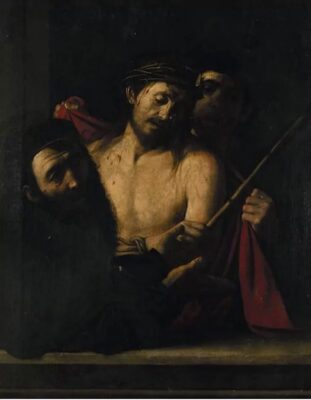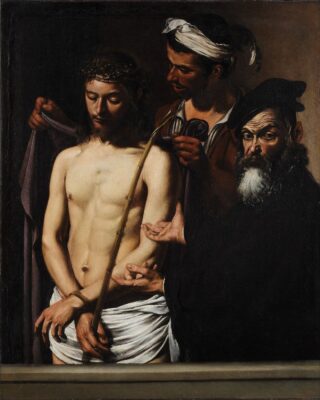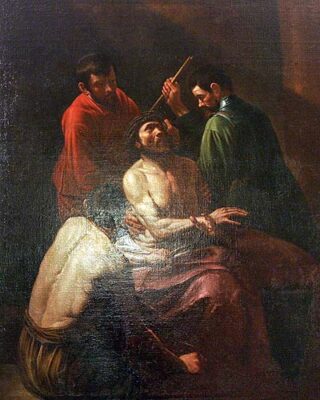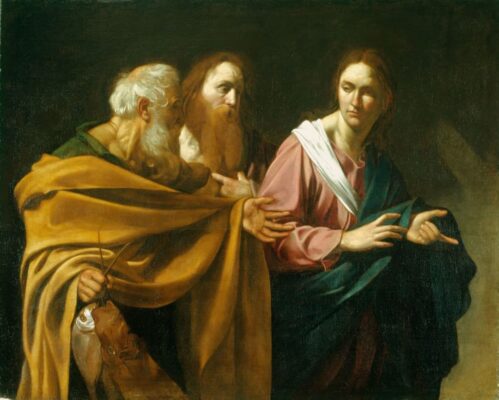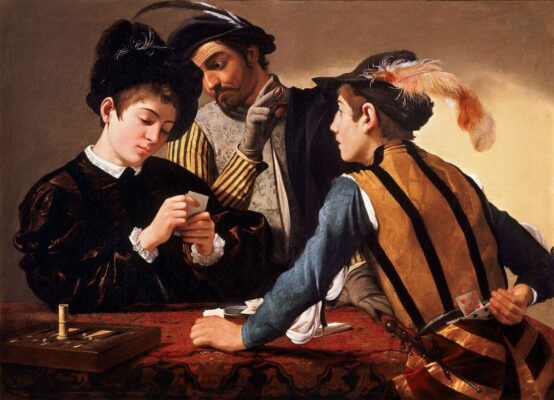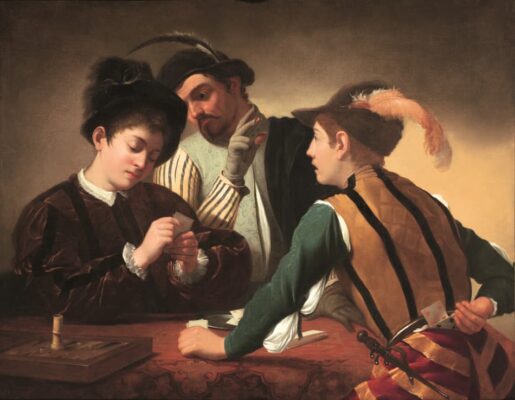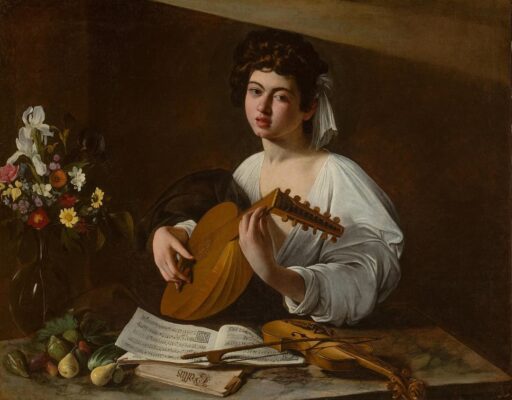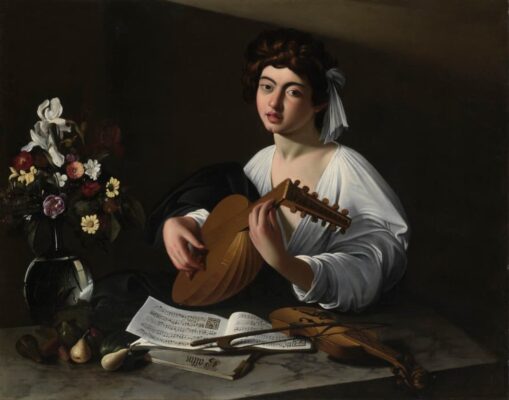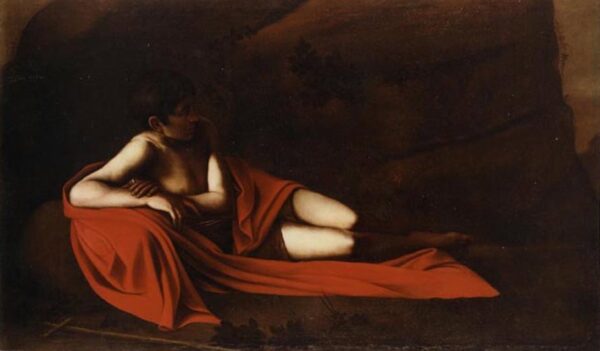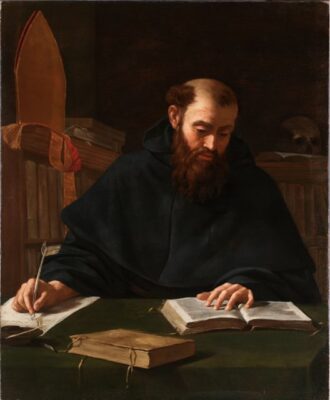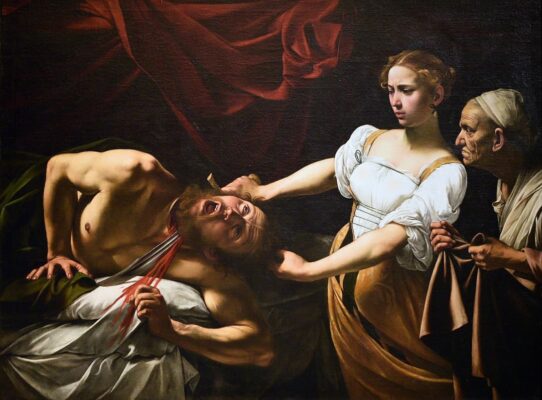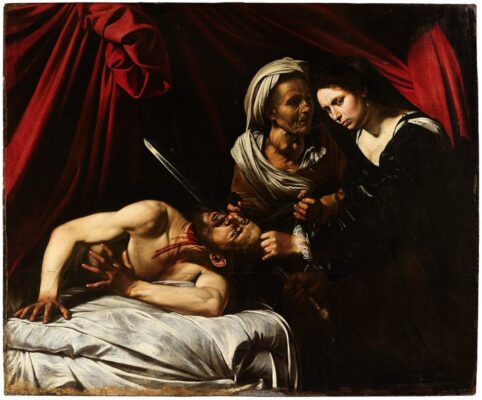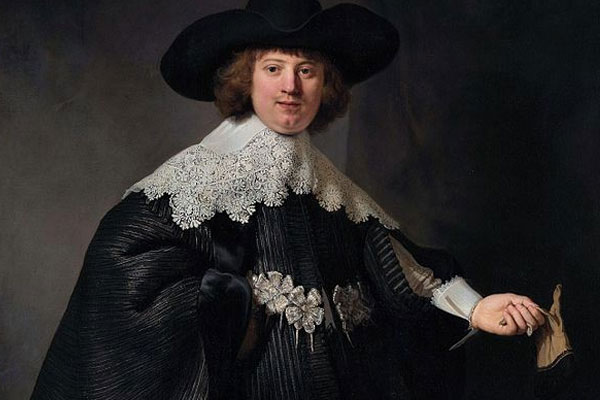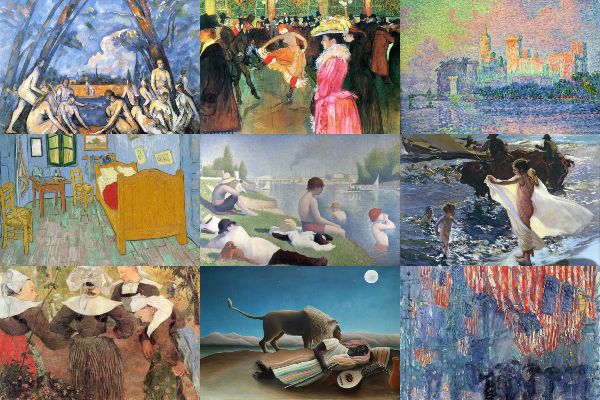15 new years, 15 new “Caravaggios”
by G. Fernández – theartwolf.com
Following the recent news of the possible attribution to Caravaggio of an “Ecce Homo” in Madrid, we review the most recent cases of works attributed -almost always with excessive optimism- to the great master of Italian Baroque painting.
The “Ecce Homo” recently attributed to Caravaggio, together with the painting of the same title, unanimously considered to be by Caravaggio, in the Palazzo Bianco.
It is difficult not to be curious and quite excited about the recent news of the possible attribution to Caravaggio of an “Ecce Homo” previously considered to be the work of a follower of Ribera, especially as the attribution seems to have a somewhat solid basis. After all, Caravaggio is not only one of the great masters of Western painting, but he was also a painter with a relatively small output, with barely fifty paintings attributed to him with relative certainty.
Nonetheless, such news should always be treated with a certain degree of caution. As soon as I heard the news, several paintings recently attributed to the artist -but which were soon forgotten or whose attribution remains, to put it generously, doubtful- immediately came to my mind. Looking through the archives, we can find the curious fact that in the last fifteen years (which is exactly the time theartwolf.com has been active), at least fifteen new works have been attributed to the artist, with only one of them joining the group of paintings indisputably attributed to the artist.
At no point should this list be taken as a way of discrediting the attribution of “Ecce Homo”, a work which the author of this article has not had the opportunity to see in person, and which, as has been said, has -unlike many of the other works on this list- a provenance and history that support its attribution. But it can serve as a healthy reminder not to get carried away by premature enthusiasm, as has happened in most of the cases presented below.
2006: “The Crowning with Thorns”
The first (but not the last) of the presumed Caravaggios found in an attic, in this case in the church of San Bartolomeo della Certosa in Genoa. The work, attributed to Caravaggio by Piero Donati, appears to be a copy (or version) of a painting (also doubtful) in the Galleria di Palazzo degli Alberti, Prato. Fifteen years later, no Caravaggio catalogue seems to recognise it as an autograph work.
2006: “The Calling of Saints Peter and Andrew”
Of all the paintings on this list, this is the only one that has achieved the almost unanimous status of “authentic”. The work, which has been in the Royal Collection for centuries, was only attributed to the master in November 2006.
“The Coronation of Thorns” and the unanimously accepted “The Vocation of Saints Andrew and Peter”.
2006: “Pilgrimage of Our Lord to Emmaus”
In early 2006, two paintings by Caravaggio (this one and the next on the list) were reported to have been found in an Italian church. Today, neither of them is generally accepted by critics.
2006: “Saint Thomas putting his finger on Christ’s wound”
Found together with the previous work, and also almost completely forgotten.
2007: “The Cardsharps”
In 2006 the historian and collector Denis Mahon acquired a painting considered to be a copy of Caravaggio’s “The Cardsharps”, now in the Kimbell Museum, for around $100,000 at Sotheby’s. The following year, Mahon made public his opinion that the painting was in fact a second version of the work, painted by Caravaggio himself, noting the presence of “pentimenti” in several of the figures. As a result, the previous owner sued Sotheby’s for financial damages, although the court eventually ruled in favour of the auction house. The painting is now on display in the Museum of the Order of St. John in London, which does not hesitate to attribute it to the master, although it is true that in recent years enthusiasm for the work seems to have waned and it is considered dubious to say the least.
“The Cardsharps”: version in the Kimbell Museum, accepted as by Caravaggio, and the version (discussed above) previously in the collection of Denis Mahon.
2007: “Apollo the Lute Player” (Badminton House version)
In 2007, the gallery owner Lawrence Salander, who would later be imprisoned for fraud, a large exhibition of old masters paintings, including the third version of “Apollo Playing the Lute Player” (the first, considered to be autograph, is in the Hermitage, while the second, somewhat disputed, belongs to the Wildenstein family). Salander called the work “the most important painting ever sold” (which is obviously false), and expected to sell it for over $100 million (too ambitious). Today, the painting is still considered rather dubious, even more so after the doubts that have arisen regarding the Wildenstein version.
“Apollo the Lute Player”: version at the Hermitage, accepted as by Caravaggio, and the (disputed) Badminton House version.
2007: “Saint Francis in meditation”.
One of the least talked-about cases was this canvas exhibited in the Pinacoteca Civica, about which little information exists more than a decade later.
2010: “The Martyrdom of St. Lawrence”
Proposed as a possible Caravaggio in 2010, but categorically rejected by Antonio Paolucci, director of the Vatican Museums.
2010-2011: John the Baptist (St John the Baptist Reclining) (Munich)
This is a somewhat special case, as the painting had been known, albeit not to the public, for at least 20 years. However, it was after a series of exhibitions in 2010 and 2011 that its attribution to Caravaggio gained momentum. Today, it is perhaps the most mysterious of all the works on this list. Certainly, the style of Caravaggio’s last years can be found in the work, although the attribution to the master is far from definitive.
2011: “St Augustine”
Presented as “a rediscovered Caravaggio” by Whitfield Fine Art at Masterpiece London, with a price tag of around £60 million. Not accepted by virtually any expert.
“St. John the Baptist” and “St. Augustine”, attributed to Caravaggio, the latter with less foundation than the former.
2012: Woah! More than 100 new Caravaggios!
Of all the news concerning alleged discoveries of new works by Caravaggio, this is perhaps the most striking. Nearly 100 presumed works by Caravaggio (mostly drawings and sketches) in the archives of the Sforzesco Castle. None of the paintings in modern catalogues come from this group.
2014: “Mary Magdalene in Ecstasy”
Proposed as a painting by Caravaggio by Mina Gregori, this is one of the most serious attributions in this list, as there are several copies of this composition by Caravaggio’s disciples, suggesting the existence of a lost original by the master. This painting, which belongs to a private European collection, is of undeniable quality. Despite this, the attribution is not accepted by all experts.
2015: “Boy Peeling a Fruit”
“Boy Peeling Fruit” is the earliest known painting by Caravaggio, of which there are several versions, although none of them is unanimously attributed to the artist (the version in the Longhi Collection in Florence is traditionally considered to be the original, but in recent years several experts have questioned this). When Christie’s put this version up for auction in 2015, attributing it to the master, most experts were not convinced and the painting did not sell, despite its starting price of less than $3 million. Curiously, another version of this painting was auctioned in 1996.
2016: “Judith and Holofernes”
“The Caravaggio found in the attic”, “the Toulouse Caravaggio”… One of the most talked-about artistic “discoveries” of the last decade was this work, proposed by Eric Turpin as a version of the painting in the Palazzo Barberini. Following the announcement, France temporarily blocked the possible export of the work so that experts from the Louvre could assess its acquisition, which was eventually ruled out. A few days before the auction, at which the work was expected to fetch around $170 million, the work was privately acquired by the millionaire J. Tomilson Hill, a trustee of the Metropolitan Museum in New York. But is it a genuine Caravaggio? I wouldn’t go so far as to say for sure. In my opinion, the work does not stand up to comparison with the version in the Palazzo Barberini, although this can also be said of other works -such as “Martha and Mary Magdalene” in the Detroit Institute of Arts – which are now considered to be autograph.
“Judith and Holofernes”: version in Palazzo Barberini, accepted as by Caravaggio, and the (disputed) version discovered in Toulouse.
2021: “Ecce Homo”
And finally, the “Ecce Homo” in Madrid. We have already commented at the beginning of this article that, unlike other recently attributed works, there are indications that seem to call for optimism. But only time will tell whether the work is finally attributed without dispute (as in the case of “The Calling of Saints Peter and Andrew”), or whether it falls into oblivion like most of the works on this list.
Follow us on:

